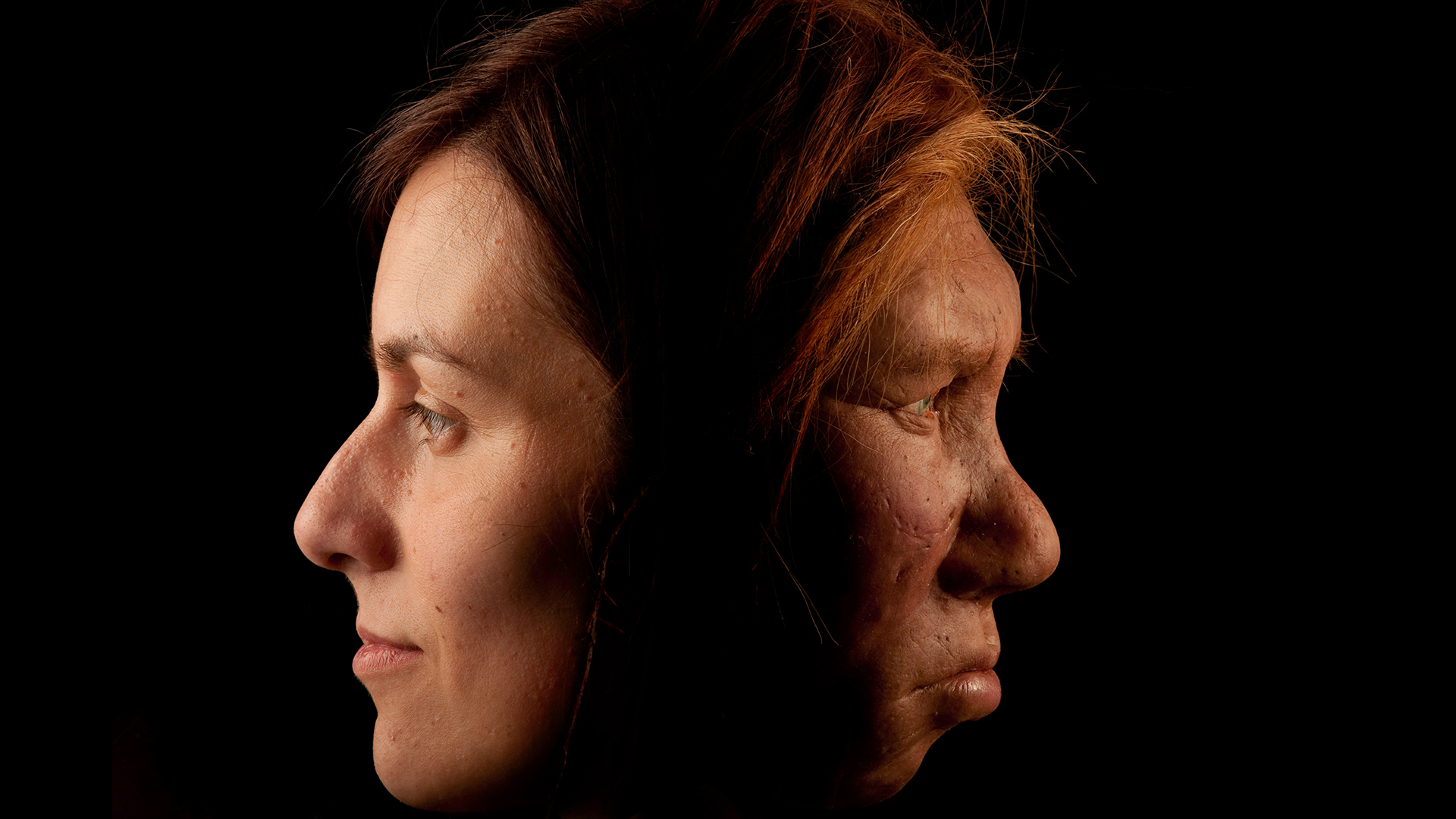Scientists finally solve mystery of why Europeans have less Neanderthal DNA than East Asians
Modern Europeans have a smaller proportion of Neanderthal genes in their genomes than East Asians do. New research suggests the reason lies at the feet of migrating early farmers.
A wave of migrating farmers from the ancient Middle East may be the reason why modern Europeans don't carry as much Neanderthal DNA as today's East Asians do, a new study finds.
All humans with ancestry from outside of Africa have a little bit of Neanderthal in them — about 2% of the genome, on average. But people with East Asian ancestry have between 8% and 24% more Neanderthal genes than people of European ancestry. That's a bit of a paradox, because fossil evidence suggests Neanderthals lived in Europe. Why, then, should East Asians carry more of those genes today?
Now, a new study posits a solution to this conundrum: While a wave of human migration out of Africa before at least 40,000 years ago brought Homo sapiens — who were hunter-gatherers — into contact with their Homo neanderthalensis cousins and led to interbreeding, a later wave of H. sapiens migrating about 10,000 years ago diluted Neanderthal genes in Europe only. This was the movement of farmers with minimal Neanderthal ancestry from what is today the Middle East and southwestern Asia into Europe. These early farmers mixed with local hunter-gatherers, bringing a more H. sapiens-flavored genome to the region. The Homo sapiens who settled East Asia by around 60,000 to 70,000 years ago did not undergo this dilution from newcomers.
"What we propose is a simple explanation," study lead author Claudio Quilodrán, a postdoctoral researcher in ecology and evolution at the University of Oxford, told Live Science. "It's just migration."
Related: 50,000-year-old DNA reveals the first-ever look at a Neanderthal family
Ever since the Neanderthal genome was first sequenced 13 years ago, there have been questions about the mixture of modern human and Neanderthal genes, said John Hawks, a paleoanthropologist at the University of Wisconsin–Madison, who was not involved in the study. Research suggests that having Neanderthal genes didn't lead to any major survival advantages or disadvantages for humans, so natural selection is probably not the reason why some populations carry more of these genes than others, Hawks told Live Science. People have suggested that maybe East Asians met and mixed with additional Neanderthal populations in parts unknown, such as India or Iran, but this is just speculation.
"This scenario says that's not necessary," Hawks said. "We can explain this difference based on just one expansion."
Get the world’s most fascinating discoveries delivered straight to your inbox.
To trace the history of human-Neanderthal relations, Quilodrán and his colleagues looked at 4,464 previously sequenced ancient to modern Homo sapiens genomes, dating from 40,000 years ago to today, examining the proportion of Neanderthal DNA in relation to latitude, longitude, time and region. They found that early on, the proportion of Neanderthal DNA in anatomically modern humans was higher in Europe than in Asia, matching with what would be expected if early Homo sapiens were radiating out of Africa and meeting their cousins in the Near East and Europe. The reduction in Neanderthal genes in European humans came later.
Particularly stark was the difference between European hunter-gatherers and the Neolithic farmers who came to settle Europe about 10,000 years ago. The hunter-gatherers had a higher proportion of Neanderthal genes than the Neolithic farmers, suggesting that this wave of newcomers diluted Neanderthal ancestry in Europe. East Asia didn't see a similar influx — their farmers were homegrown, Hawks said — so East Asian genetics weren't diluted in the same way. The researchers published their findings Wednesday (Oct. 18) in the journal Science Advances.
"What's so fascinating about this article is that it takes into account a tremendous amount of ancient DNA evidence that's now out there," said Richard Potts, a paleoanthropologist and director of the Human Origins Program at the Smithsonian's National Museum of Natural History in Washington, D.C., who was not involved in the research.
Encounters between Neanderthals and modern humans occurred even earlier than 40,000 years ago, Potts told Live Science. Last week (Oct. 13), a group of researchers from the University of Pennsylvania reported in the journal Current Biology that well before 75,000 years ago, a group of modern humans met Neanderthals in Europe, interbred with them, and then died out, leaving their mark in 6% of the Neanderthal genome.
"It's a very fluid system," Potts said. "This particular paper didn't need to take anything like that into account, but it will be really interesting once that added complexity is considered."

Stephanie Pappas is a contributing writer for Live Science, covering topics ranging from geoscience to archaeology to the human brain and behavior. She was previously a senior writer for Live Science but is now a freelancer based in Denver, Colorado, and regularly contributes to Scientific American and The Monitor, the monthly magazine of the American Psychological Association. Stephanie received a bachelor's degree in psychology from the University of South Carolina and a graduate certificate in science communication from the University of California, Santa Cruz.



